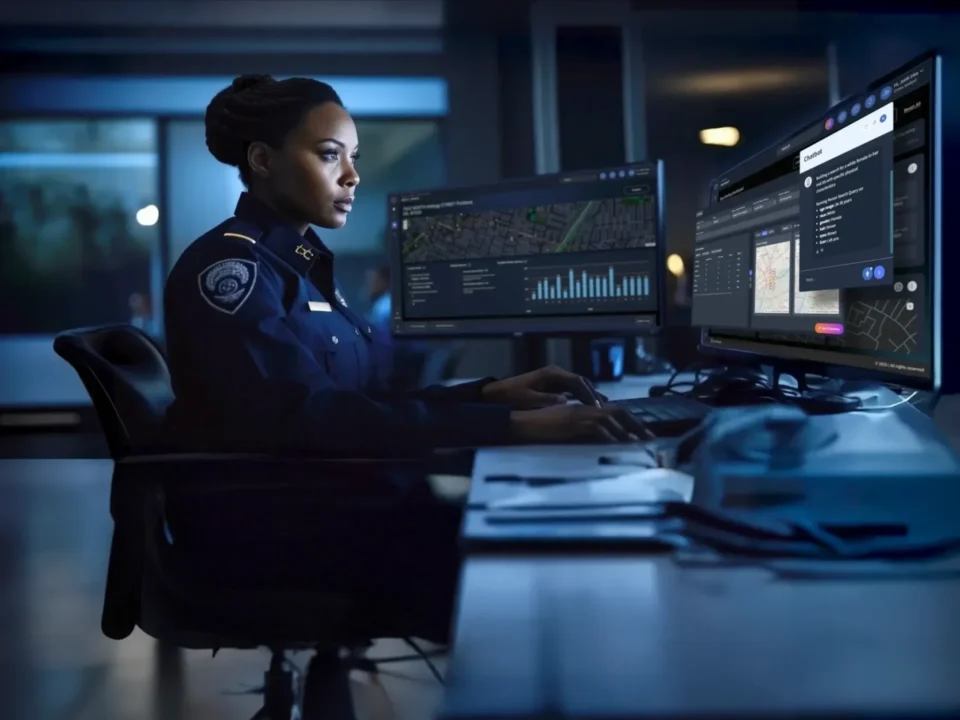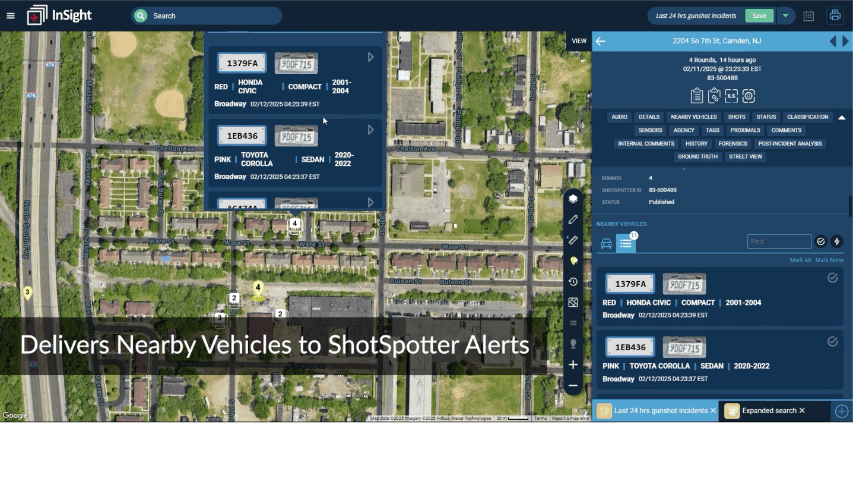Campus environments are meant to foster learning, creativity, and community — not fear. Yet in recent years, the rise in campus shootings has underscored the urgent need for faster, more coordinated responses to violent threats.
Active shooter incidents typically last less than 12 minutes, while average police response times often exceed 18 minutes. Compounding the challenge, more than 80% of gunfire nationwide goes unreported to police — leaving responders unaware until it’s too late.
When seconds matter, technology that detects threats early, delivers verified intelligence, and connects the dots across data systems can save lives.
That’s where SoundThinking’s ShotSpotter and PlateRanger come in — working together to provide real-time gunshot detection and vehicle intelligence, empowering campus law enforcement to respond with speed, precision, and confidence.
The Challenge: Seconds Matter When Shots Are Fired
In the chaos of an active shooter situation, situational awareness is everything.
Traditional reporting systems rely on 9-1-1 calls, which can be delayed by confusion, panic, or fear. Each minute lost means lives at greater risk. When a suspect flees the scene in a vehicle, investigators face an even greater challenge: identifying and locating that car amid limited eyewitness information and fragmented camera coverage.
Campus law enforcement needs a connected system of awareness — one that instantly detects gunfire, identifies associated vehicles, and shares verified intelligence across dispatch, law enforcement, and emergency management systems.
SoundThinking’s ecosystem delivers exactly that.
The Solution: Unified Campus Threat Detection
ShotSpotter: Instant Awareness, Verified Accuracy
ShotSpotter®, the leading acoustic gunshot detection system, identifies outdoor gunfire within seconds and pinpoints the exact location with unmatched precision.
Using a network of acoustic sensors positioned across campus perimeters, ShotSpotter detects and triangulates the sound of a gunshot. Its sophisticated AI algorithms classify the sound and determine location, time, and number of rounds fired.
Each detection is then verified in real time by trained acoustic experts at SoundThinking’s 24/7 Incident Review Center (IRC) — ensuring accuracy rates above 97% with less than 0.5% false positives.
Once confirmed, alerts are instantly sent to campus and local law enforcement via desktop, mobile, or integrated platforms such as CAD, RMS, or PSIM systems.
This process takes under 60 seconds — often before the first 9-1-1 call — giving officers and campus officials a life-saving head start.
PlateRanger: Vehicle Intelligence in Real Time
When vehicles are part of an incident — whether as the shooter’s arrival method or getaway route — PlateRanger delivers fast, accurate intelligence that helps law enforcement act on leads immediately.
Powered by Rekor® technology, PlateRanger uses AI-driven license plate and vehicle recognition to capture key identifiers such as:
- License plate numbers
- Vehicle make, model, and color
- Direction and time of travel
Unlike traditional fixed ALPR systems, PlateRanger offers a flexible deployment model:
- Fixed cameras for perimeter monitoring and parking lots
- Mobile app that lets officers scan license plates using a smartphone or tablet
- Cloud-based integrations that feed directly into investigative databases like CrimeTracer
This continuous stream of visual data enables investigators to track suspect or getaway vehicles, identify potential accomplices, and quickly connect incidents that might otherwise go unlinked.
Connected Response: How It Works
1. Gun is Fired
When a gun is fired, the sound of a muzzle blast radiates outward.
2. Gunshot is Detected, Located, and Reviewed
Acoustic sensors detect impulsive sounds and use AI and triangulation to identify gunfire and pinpoint its location. The data then goes to the ShotSpotter Incident Review Center, where experts verify the event in real time.
3. Campus Notification and Police Response
Once a gunfire event is verified, alerts are sent to campus law enforcement for immediate action. In compliance with the Clery Act, campuses can issue emergency notifications and timely warnings, while gunfire data integrates with security systems to support a coordinated response.
4. Vehicle Detection and Identification
As officers respond, PlateRanger’s AI-based vehicle and license plate recognition automatically scans the area around the incident, identifying potential suspect or getaway vehicles, as well as capturing make, model, and direction of travel.
5. Integration & Investigation
Vehicle and gunfire data are seamlessly shared across connected systems, including CrimeTracer and case management tools, providing investigators with fast, actionable leads that link vehicles, locations, and incidents for a more effective response and follow-up.
Integration Services: A Connected Security Ecosystem
The true power of ShotSpotter and PlateRanger lies in their ability to connect.
With open APIs and cloud interoperability, both solutions integrate with a wide range of security technologies — enabling unified command and control across your entire safety ecosystem.
Integrated Capabilities Include:
- Automatically point and zoom cameras toward gunfire incidents
- Display gunshot locations on real-time crime maps
- Seamlessly transfer gunshot data to CAD, RMS, and crime analysis tools
- Identify vehicles leaving the scene via PlateRanger’s ALPR network
- Access NCIC, AMBER Alert, and CrimeTracer integrations for broader intelligence
- Connect through PSIM and mass communication systems for multi-channel response
Whether your campus already uses SoundThinking products or third-party systems, ShotSpotter and PlateRanger can integrate to form a cohesive, interoperable network — transforming fragmented alerts into coordinated action.
Compliance and Transparency
For campus administrators, safety must align with compliance.
ShotSpotter supports Clery Act requirements by ensuring campuses can issue timely warnings and emergency notifications for confirmed threats. PlateRanger complements this by documenting vehicle movements for accurate reporting and evidence management.
Both solutions operate with strict privacy safeguards, ensuring data is used responsibly, securely, and in accordance with legal and institutional standards.
Campus Threat Detection Technology with a Purpose
At SoundThinking, our mission is to help communities — and campuses — use technology with purpose.
ShotSpotter and PlateRanger exemplify that mission by empowering safety professionals to detect, identify, and respond faster when it matters most.
By connecting gunfire detection with vehicle intelligence, campuses can transform isolated systems into a single network of awareness — protecting students, faculty, and staff through real-time, data-driven decision-making.
Schedule a Demo to See How ShotSpotter and PlateRanger Can Work Together to Protect Your Campus.







